Table of Contents
Looking to create a vibrant, safe, and long-lasting play area for kids? You've landed in the right spot! This article dives deep into the world of plastic commercial playground equipment, offering a comprehensive guide for schools, parks, and recreational facilities aiming to build the perfect play space. We'll explore the numerous advantages of choosing plastic over traditional materials, from its durability and low maintenance to its vibrant color options and design flexibility. But it's not just about fun and games; safety is paramount. We'll break down the critical safety standards and compliance regulations you need to know when selecting and installing playground equipment. Then, we'll unleash your inner designer with tips on crafting an engaging and inclusive playground that sparks imagination and promotes physical activity. Finally, we'll equip you with the knowledge to maintain your investment, ensuring years of safe and enjoyable play. So, let's jump in and discover how plastic commercial playground equipment can transform your play area into a wonderland!
The Benefits of Plastic Commercial Playground Equipment
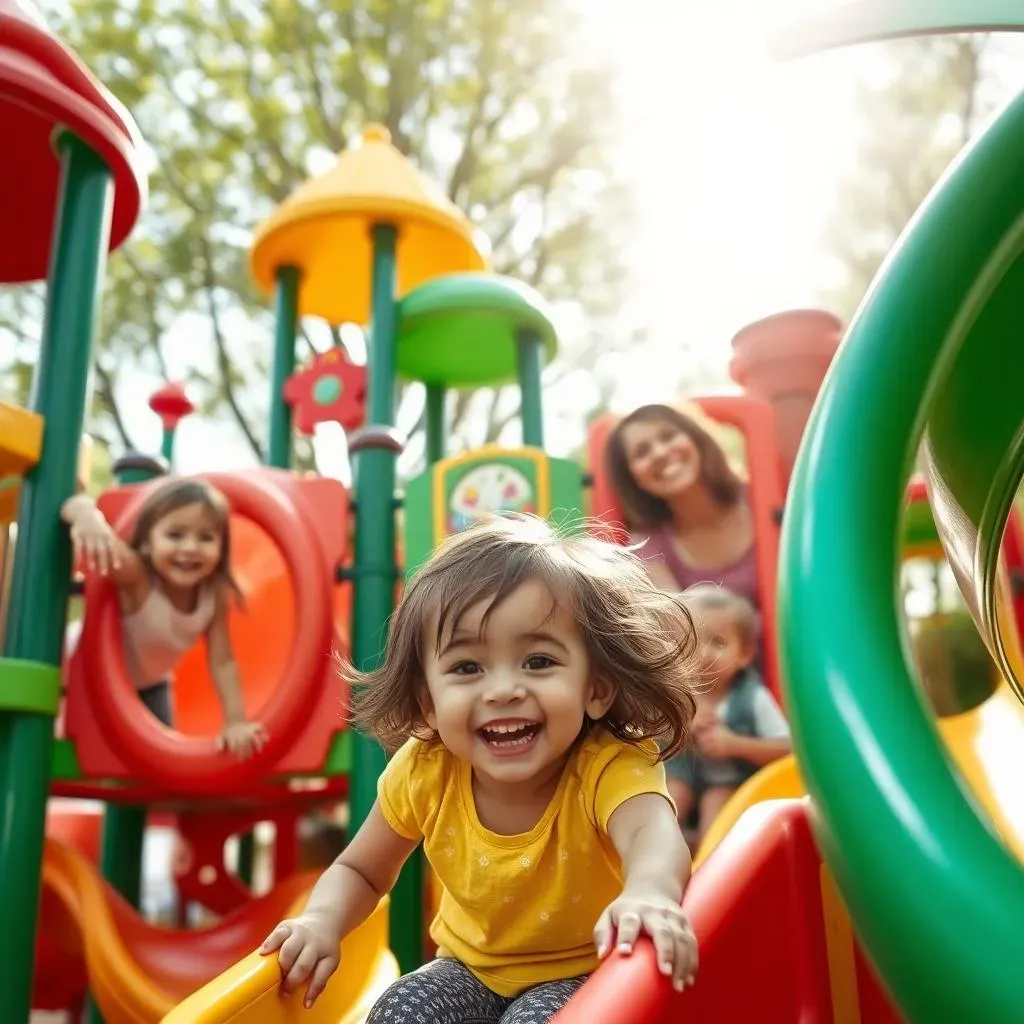
The Benefits of Plastic Commercial Playground Equipment
Durability That Defies the Elements
Let's face it, playground equipment takes a beating. Sun, rain, snow, and a whole lot of energetic kids – it's a tough life out there! That's where the incredible durability of plastic commercial playground equipment shines. Unlike wood, which can rot, splinter, and warp, or metal, which can rust and become scorching hot, plastic stands strong against the elements. High-quality plastics are UV-resistant, meaning they won't fade or degrade under the sun's harsh rays. They're also impervious to moisture, preventing rot and decay. This translates to a longer lifespan for your equipment and less money spent on repairs and replacements. Think of it as an investment that pays off year after year.
Safety First: A Smooth and Secure Play Experience
When kids are at play, their safety is the top priority. Plastic commercial playground equipment offers several safety advantages. The smooth, non-abrasive surfaces of plastic components minimize the risk of scrapes and splinters, common hazards with wood structures. Many plastic playground components are also designed with rounded edges and impact-absorbing features, further reducing the chance of injuries from falls or collisions. Plus, plastic is non-toxic and doesn't require chemical treatments to prevent decay, ensuring a healthier play environment for children.
Consider this:
Endless Design Possibilities and Vibrant Colors
Who says playgrounds have to be boring? Plastic commercial playground equipment opens up a world of design possibilities. Manufacturers can mold plastic into virtually any shape, creating unique and imaginative play structures that capture children's imaginations. From towering castles to winding tunnels, the possibilities are endless. And let's not forget the vibrant colors! Plastic can be dyed in a rainbow of hues, creating visually appealing play spaces that are both stimulating and inviting. This design flexibility allows you to create a playground that perfectly complements your school or park's aesthetic and caters to the specific needs and interests of the children in your community.
Here's a quick comparison of material benefits:
Material | Durability | Safety | Design Flexibility | Maintenance |
|---|---|---|---|---|
Plastic | Excellent | High | Very High | Low |
Wood | Moderate | Moderate | Moderate | High |
Metal | Good | Moderate | Moderate | Moderate |
Choosing the Right Plastic for Your Commercial Playground Equipment
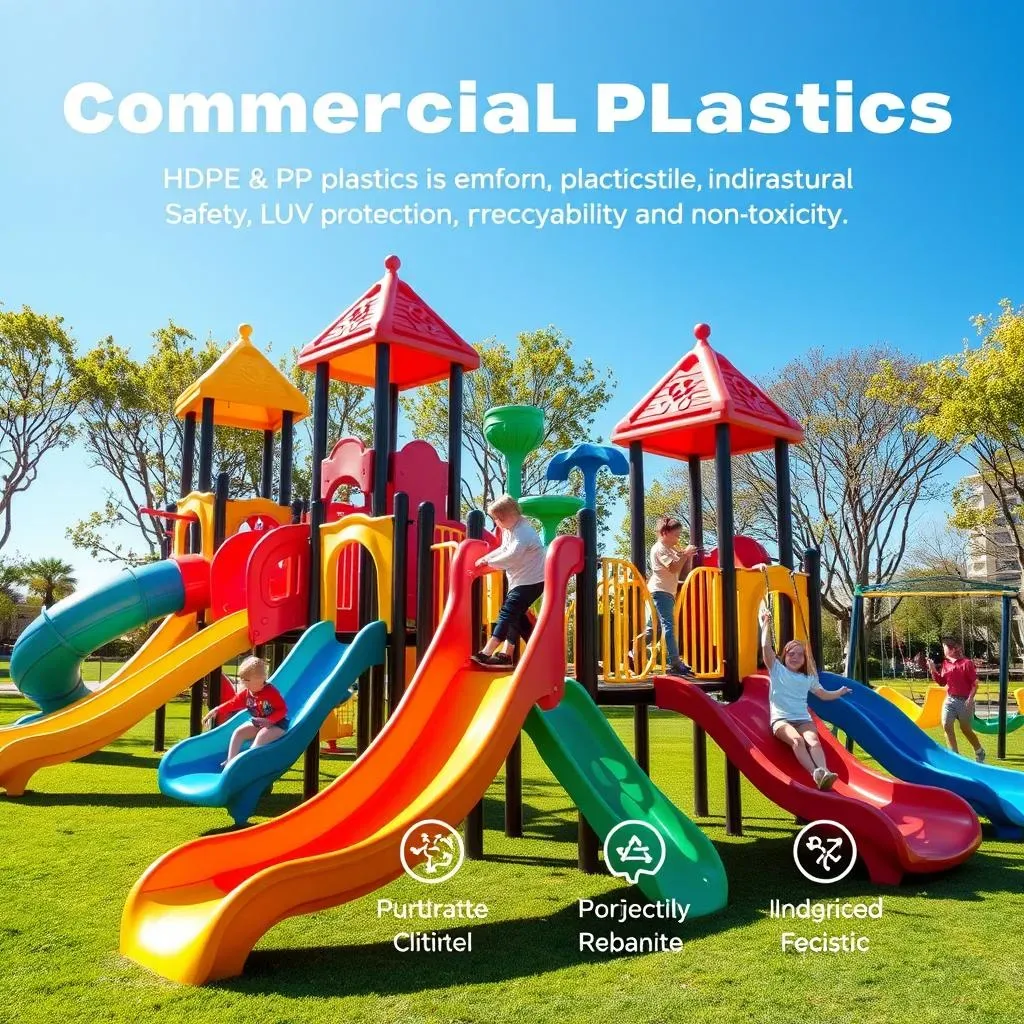
Choosing the Right Plastic for Your Commercial Playground Equipment
Understanding Plastic Types: A Playground Material Guide
Alright, so you're sold on plastic – awesome choice! But hold up, not all plastics are created equal. When it comes to plastic commercial playground equipment, you'll typically encounter a few key players: Polyethylene (PE), Polypropylene (PP), and Polyvinyl Chloride (PVC). Each has its own strengths and weaknesses, so understanding the differences is crucial. PE, especially High-Density Polyethylene (HDPE), is a popular choice for its excellent durability, weather resistance, and recyclability. PP is known for its high strength-to-weight ratio and resistance to chemical solvents. PVC, while less common in main structural components due to environmental concerns, can still be found in certain playground elements.
Think of it like choosing the right tool for the job. You wouldn't use a hammer to screw in a screw, right? Similarly, you need to select the plastic that best suits the specific application and the demands of your playground environment.
Factors to Consider: Durability, Safety, and Environment
so you know the main plastic contenders. Now, let's dive into the factors that should influence your decision. Durability is key – you want a plastic that can withstand years of heavy use and exposure to the elements. Look for plastics with high impact resistance and UV protection to prevent fading and cracking. Safety is non-negotiable. Ensure the plastic is non-toxic, free of harmful chemicals, and has smooth, rounded edges to minimize the risk of injuries. Finally, consider the environmental impact. Opt for recycled or recyclable plastics whenever possible to reduce your playground's carbon footprint. After all, we want to create fun spaces for kids while also protecting the planet they'll inherit.
Here's a handy checklist to keep in mind:
- Durability: High impact resistance, UV protection
- Safety: Non-toxic, smooth surfaces, rounded edges
- Environment: Recycled or recyclable content
- Cost: Balance quality with budget
- Aesthetics: Color options, design flexibility
Plastic Commercial Playground Equipment: Safety Standards and Compliance
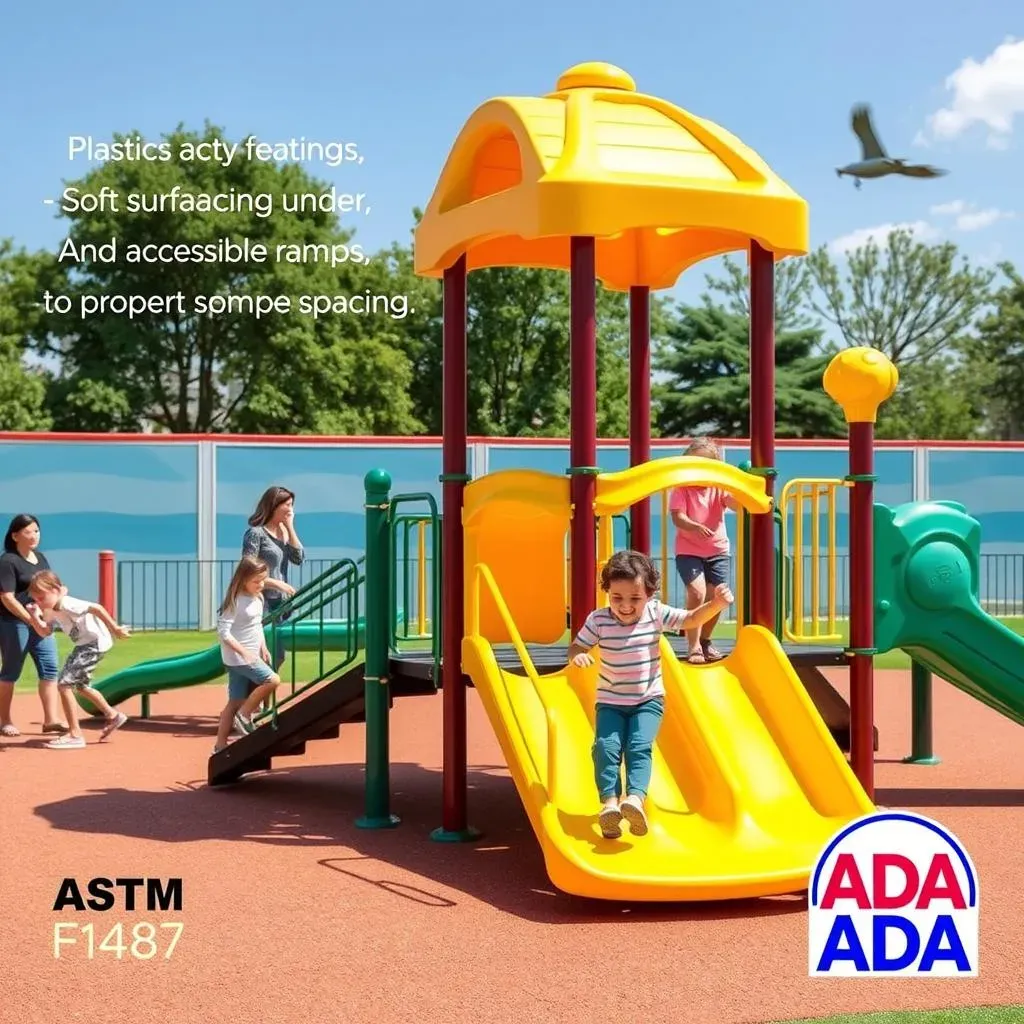
Plastic Commercial Playground Equipment: Safety Standards and Compliance
Navigating the Regulatory Landscape
Alright, let's get serious about safety. When it comes to plastic commercial playground equipment, you can't just wing it. There's a whole alphabet soup of safety standards and compliance regulations you need to be aware of. In the US, the big one is ASTM F1487, which sets the standard for playground safety. It covers everything from fall heights and surfacing requirements to equipment spacing and entrapment hazards. Then there's the Americans with Disabilities Act (ADA), which ensures that playgrounds are accessible to children of all abilities. States and local municipalities may also have their own regulations, so it's crucial to do your homework and ensure you're meeting all applicable requirements. Think of it as your responsibility to create a safe and inclusive play environment for every child.
Ignoring these standards isn't just risky; it's irresponsible. Non-compliance can lead to serious injuries, lawsuits, and even the closure of your playground. So, take the time to understand the rules and regulations, and work with certified playground professionals to ensure your equipment meets all safety requirements.
Designing an Engaging Playground with Plastic Commercial Playground Equipment
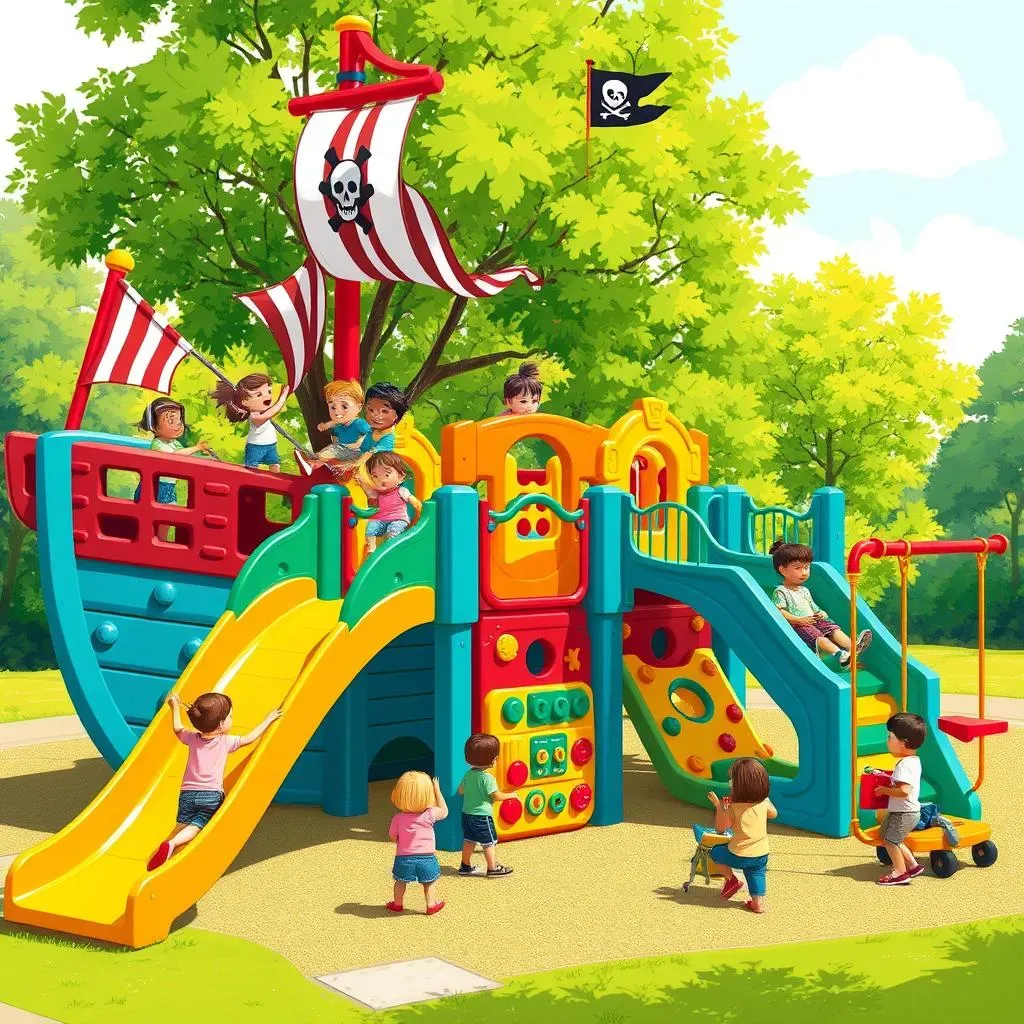
Designing an Engaging Playground with Plastic Commercial Playground Equipment
Themed Play Spaces: Igniting Imagination
Want to take your playground from ordinary to extraordinary? Consider incorporating themed play spaces! Plastic commercial playground equipment is perfect for bringing imaginative concepts to life. Think pirate ships, enchanted forests, or even futuristic space stations. Themed playgrounds not only capture children's attention but also encourage creative play and storytelling. Use vibrant colors, unique shapes, and interactive elements to immerse kids in the theme. For example, a pirate ship could include climbing ropes, a slide resembling a plank, and a crow's nest for lookout duty. An enchanted forest could feature winding tunnels, mushroom-shaped climbers, and whimsical sculptures. The possibilities are truly endless!
When designing a themed playground, involve the community! Ask kids what themes they'd love to see, and incorporate their ideas into the design. This will not only create a more engaging play space but also foster a sense of ownership and pride among the children in your community.
Inclusive Design: Play for Everyone
A truly great playground is one that welcomes children of all abilities. Inclusive design is about creating a play space that is accessible and engaging for everyone, regardless of their physical, cognitive, or sensory abilities. Plastic commercial playground equipment plays a crucial role in inclusive design. Ramps, transfer platforms, and accessible swings allow children with mobility challenges to participate in the fun. Sensory play elements, such as musical instruments, textured surfaces, and water features, provide stimulating experiences for children with sensory processing disorders. Consider incorporating a variety of play activities that cater to different developmental levels and interests.
Remember, inclusion isn't just about meeting ADA requirements; it's about creating a welcoming and supportive environment where every child feels valued and included. By thoughtfully designing your playground with inclusivity in mind, you can create a space where all children can learn, grow, and play together.
Here are some inclusive playground elements to consider:
- Ramps and transfer platforms
- Accessible swings
- Sensory play panels
- Adaptive seating
- Ground-level play features
Maximizing Play Value: Combining Elements for Fun
Creating an engaging playground isn't just about individual pieces of equipment; it's about how those pieces work together to create a dynamic and stimulating play environment. Think about how children will move through the space and interact with different elements. Combine climbing structures with slides, tunnels, and balance beams to create obstacle courses that challenge their physical skills. Incorporate interactive play panels that encourage problem-solving and teamwork. And don't forget the importance of open spaces for running, jumping, and imaginative play. By carefully planning the layout and flow of your playground, you can maximize its play value and keep kids engaged for hours on end.
Consider these questions when planning your playground layout:
- How will children move through the space?
- What types of play activities will be available?
- How can I create a sense of adventure and discovery?
- Are there enough shaded areas for rest and relaxation?
- Is the playground layout safe and accessible for all children?
Maintenance and Longevity of Plastic Commercial Playground Equipment
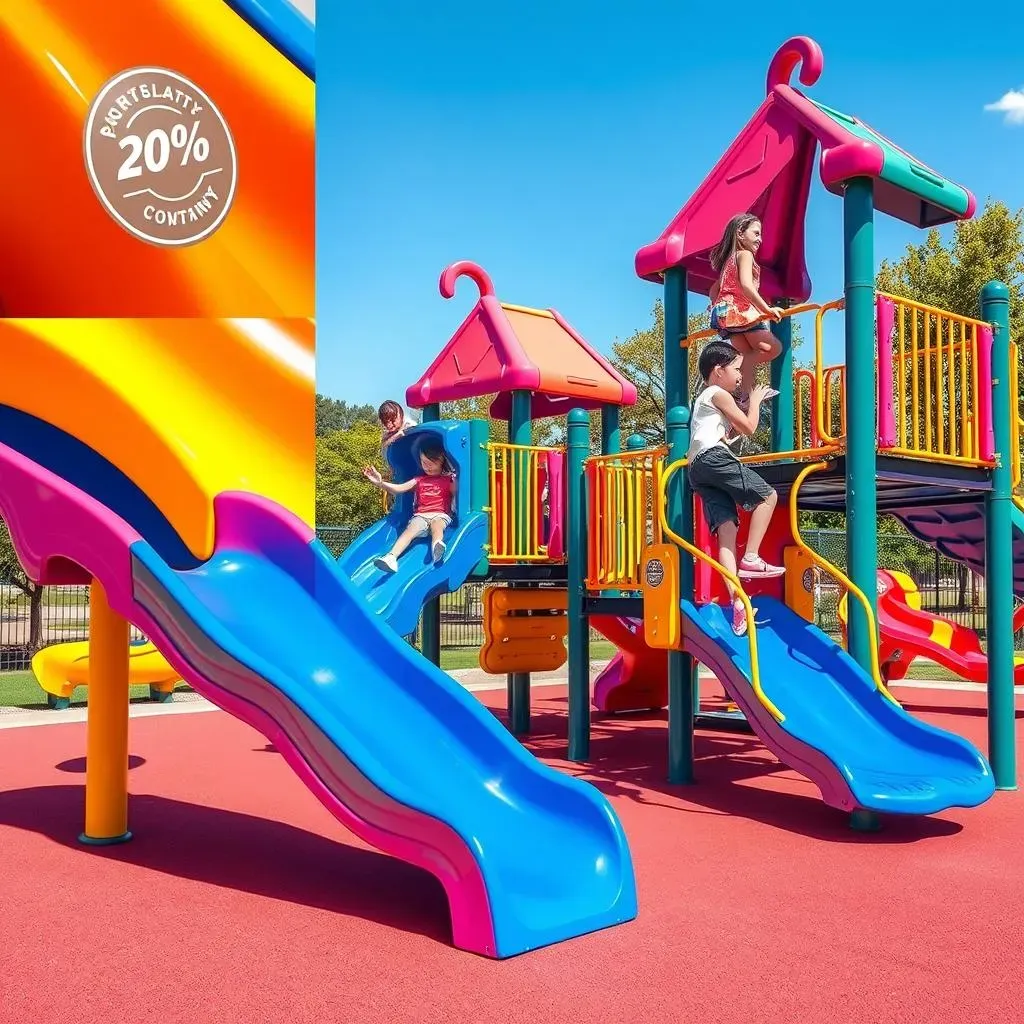
Maintenance and Longevity of Plastic Commercial Playground Equipment
Regular Inspections: Catching Problems Early
Think of your plastic commercial playground equipment like your car – it needs regular check-ups to stay in top shape! Implement a routine inspection schedule to identify potential issues before they become major headaches. Look for cracks, loose bolts, worn surfaces, and any signs of vandalism. Pay special attention to high-traffic areas like slides, swings, and climbing structures. Document your inspections and keep a log of any repairs or maintenance performed. This not only helps you track the condition of your equipment but also provides valuable information for future maintenance planning. I've seen playgrounds where a simple crack, left unattended, turned into a major structural issue, costing a fortune to fix! Don't let that happen to you.
A quick checklist for your inspections:
- Check for cracks, splinters, or warping
- Tighten loose bolts and hardware
- Inspect surfacing for proper depth and impact absorption
- Look for signs of vandalism or wear and tear
- Ensure all components are securely attached
Cleaning and Upkeep: Keeping it Fresh
A clean playground is a happy playground! Regular cleaning not only improves the appearance of your equipment but also helps prevent the spread of germs and bacteria. Use a mild soap and water solution to wash down plastic surfaces, removing dirt, grime, and graffiti. For tougher stains, you can use a specialized plastic cleaner. Be sure to rinse thoroughly to remove any soap residue. Pay attention to areas that tend to accumulate dirt, such as handrails, seats, and climbing holds. And don't forget to clean the surrounding surfacing as well! A power washer can be a great tool for cleaning large areas of rubber or poured-in-place surfacing. I remember one park transformed their playground with a simple power wash – it looked brand new!
Here's a handy cleaning schedule:
Frequency | Task | Materials |
|---|---|---|
Weekly | Wash down surfaces | Mild soap and water |
Monthly | Deep clean high-traffic areas | Specialized plastic cleaner |
Quarterly | Inspect and clean surfacing | Power washer (optional) |
Repairing Damage: Acting Fast
Even with the best maintenance, damage can still occur. When you spot a problem, don't delay – address it immediately! Small cracks or chips can often be repaired with a plastic welding kit or a specialized adhesive. Loose bolts should be tightened or replaced. If a component is severely damaged, it may need to be replaced entirely. Contact the manufacturer or a certified playground installer for assistance. Ignoring damage can not only create a safety hazard but also lead to further deterioration of the equipment. Think of it as preventative medicine for your playground – a little TLC can go a long way in extending its lifespan.
Consider this:
Protecting Against Vandalism: Deterrents and Solutions
Unfortunately, vandalism can be a reality for many playgrounds. Graffiti, broken equipment, and theft can all take a toll on your investment. There are several steps you can take to deter vandalism. Install security cameras to monitor the playground. Improve lighting to make the area more visible at night. Consider installing fencing to restrict access after hours. And work with the community to promote a sense of ownership and responsibility for the playground. When vandalism does occur, address it quickly. Remove graffiti immediately and repair any damage to the equipment. The faster you respond, the less likely vandals are to target your playground again. I've seen communities rally together to repaint vandalized playgrounds, sending a clear message that such behavior won't be tolerated.
Conclusion: Investing in Play with Plastic Commercial Playground Equipment
Choosing the right playground equipment is an investment in the health, happiness, and development of children. Plastic commercial playground equipment offers a compelling combination of durability, safety, design flexibility, and low maintenance, making it an ideal choice for schools, parks, and recreational facilities. By understanding the benefits, selecting the appropriate materials, adhering to safety standards, and designing engaging play spaces, you can create a vibrant and inclusive environment where children can thrive for years to come. So, embrace the possibilities and transform your play area into a wonderland of fun and adventure with plastic commercial playground equipment!